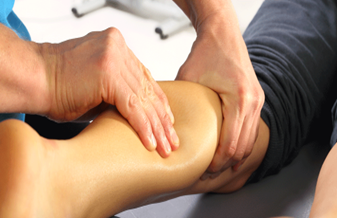In the study of HEALTH AND SKINCARE / SOMATOLOGY / BEAUTY AND NAILS / HAIR AND BEAUTY / COSMETOLOGY / MASSAGE TECHNOLOGY, we learn that improving range of motion and flexibility through massage can be a valuable component of a comprehensive approach to wellness. Here are some massage techniques and considerations that can help enhance range of motion and flexibility:

- Deep Tissue Massage: targets specific muscles and connective tissues to release tension and improve flexibility. By applying sustained pressure using slow, deep strokes, a massage therapist can help break up scar tissue, adhesions, and muscle knots that may limit range of motion.
- Myofascial Release: This technique focuses on releasing tension in the fascia, the connective tissue that surrounds and supports muscles. By applying gentle, sustained pressure to the fascia, Myofascial release can help improve flexibility and relieve restrictions.
- Active Release Techniques (ART): a soft tissue management system that aims to treat problems with muscles, tendons, ligaments, fascia, and nerves. It involves the use of specific movements while applying pressure to break up adhesions and scar tissue, promoting improved range of motion.
- Proprioceptive Neuromuscular Facilitation (PNF) Stretching: Some massage therapists incorporate PNF stretching techniques into their sessions to enhance flexibility. PNF stretching involves a combination of stretching and contraction of the targeted muscle groups, which can lead to improved flexibility and range of motion.
- Cross-Fiber Friction: This technique involves applying pressure across the grain of the muscle to break up adhesions and scar tissue, which can help improve flexibility and range of motion.
- Trigger Point Therapy: Targeting specific trigger points, or areas of muscle tightness and tenderness, can help release tension and improve flexibility in the affected muscles.
- Communication: Should you wish to study HEALTH AND SKINCARE / SOMATOLOGY / BEAUTY AND NAILS / HAIR AND BEAUTY / COSMETOLOGY / MASSAGE TECHNOLOGY, you will learn that t’s crucial to communicate openly with your massage therapist about your specific goals for improving range of motion and flexibility. They can tailor the massage session to address your individual needs and focus on areas of tightness or limited mobility.
- Regular Maintenance: Consistent massage sessions over time can have cumulative benefits for improving range of motion and flexibility. Working with a qualified massage therapist on a regular basis can help address chronic muscle tension and promote lasting improvements in mobility.
It is important to note that while massage can be beneficial for improving range of motion and flexibility, it should be part of a holistic approach that may also include targeted stretching exercises, strength training, and other activities specific to your individual needs and capabilities. Always consult with a healthcare professional or a qualified HEALTH AND SKINCARE / SOMATOLOGY / BEAUTY AND NAILS / HAIR AND BEAUTY / COSMETOLOGY / MASSAGE TECHNOLOGY therapist to develop a comprehensive plan for addressing your range of motion and flexibility goals.
